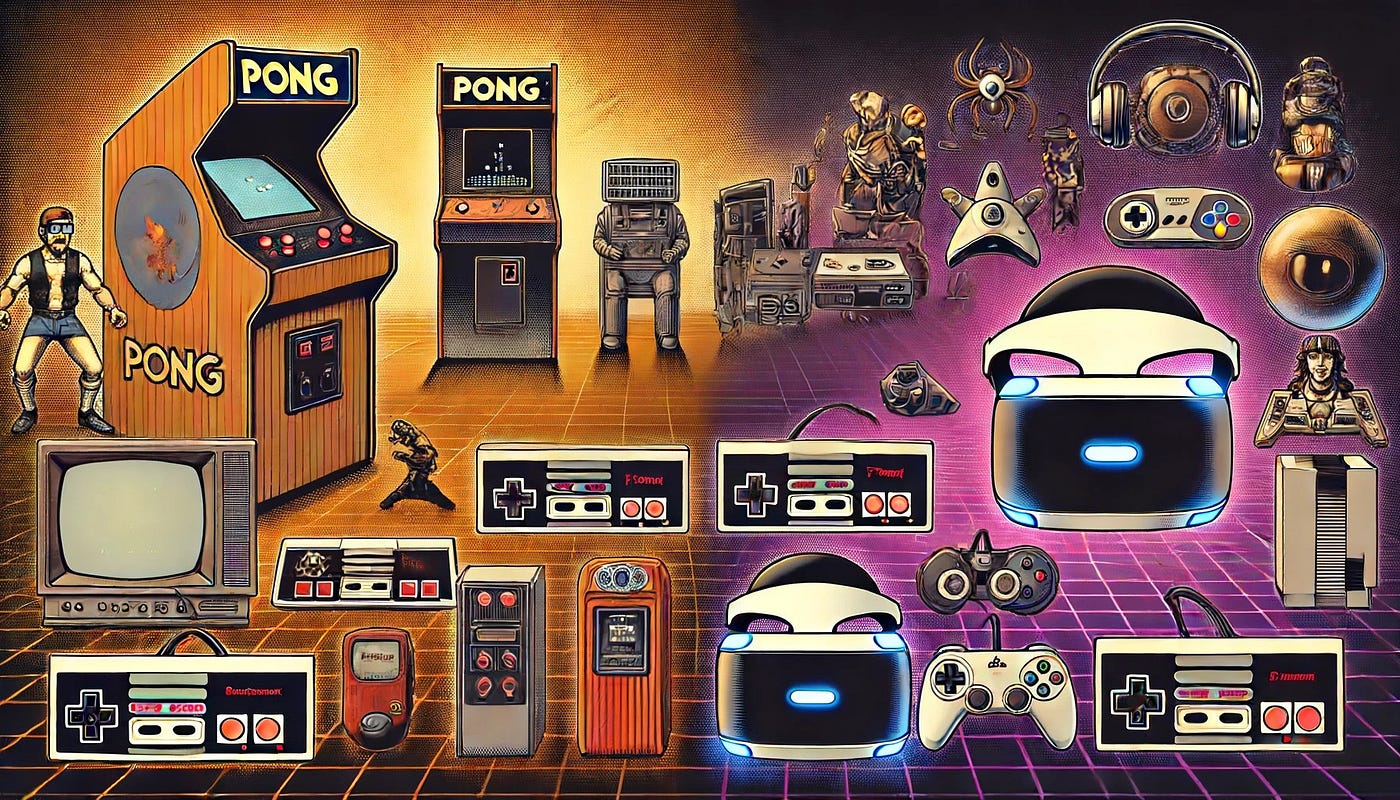Video games have come a long way since their inception in the 1970s. From simple pixelated graphics to immersive virtual reality experiences, the evolution of video games is a fascinating journey of technological advancements and creative innovation. Let’s explore the major milestones in the history of video games.
The Early Days: Pong and Arcade Games
Pong (1972)
Pong, developed by Atari, is often considered the first commercially successful video game. This simple two-dimensional table tennis game laid the foundation for the gaming industry and sparked the creation of arcade games.
Space Invaders (1978)
Space Invaders revolutionized the arcade game industry with its engaging gameplay and increasing difficulty levels. It became a cultural phenomenon and paved the way for future arcade classics.
The Golden Age of Arcade Games
Pac-Man (1980)
Pac-Man, created by Namco, became one of the most iconic video games of all time. Its unique gameplay, colorful graphics, and memorable characters captured the hearts of gamers worldwide.
Donkey Kong (1981)
Donkey Kong introduced the world to Mario, one of gaming’s most beloved characters. This platform game by Nintendo set the stage for future adventure and platform games.
The Rise of Home Consoles
Atari 2600 (1977)
The Atari 2600 brought video games into the living room, allowing players to enjoy games at home. With its interchangeable cartridges, the console offered a variety of games, including classics like Space Invaders and Asteroids.
Nintendo Entertainment System (NES) (1985)
The NES revived the video game industry after the crash of 1983. Iconic titles like Super Mario Bros., The Legend of Zelda, and Metroid established Nintendo as a dominant force in the gaming world.
The Evolution of Graphics and Gameplay
Sega Genesis (1988) and Super Nintendo Entertainment System (SNES) (1990)
The 16-bit era saw a significant improvement in graphics and sound. The Sega Genesis and SNES introduced gamers to titles like Sonic the Hedgehog, Street Fighter II, and Super Mario World.
PlayStation (1994) and Nintendo 64 (1996)
The transition to 3D graphics marked a new era in gaming. Sony’s PlayStation and Nintendo 64 brought immersive gameplay experiences with titles like Final Fantasy VII, Metal Gear Solid, and The Legend of Zelda: Ocarina of Time.
The Online Gaming Revolution
Xbox Live (2002)
Microsoft’s Xbox Live service revolutionized online gaming, allowing players to connect and compete with others worldwide. This innovation set the stage for modern online multiplayer games.
World of Warcraft (2004)
Blizzard’s World of Warcraft became a cultural phenomenon, popularizing the massively multiplayer online role-playing game (MMORPG) genre. It created a vast online community of players and set new standards for online gaming.
The Era of High-Definition and Virtual Reality
PlayStation 4 (2013) and Xbox One (2013)
The eighth generation of consoles brought high-definition graphics, powerful processors, and enhanced online capabilities. Games like The Witcher 3, Grand Theft Auto V, and Fortnite showcased the potential of modern gaming hardware.
Virtual Reality (VR)
VR technology has taken gaming to new heights, offering immersive experiences that were once thought impossible. Devices like the Oculus Rift, PlayStation VR, and HTC Vive provide players with a new level of interaction and immersion.
The Future of Gaming
Cloud Gaming
Cloud gaming services like Google Stadia, NVIDIA GeForce Now, and Xbox Cloud Gaming (Project xCloud) promise to make high-quality gaming accessible without the need for expensive hardware. Players can stream games directly to their devices, opening up new possibilities for gaming.
Augmented Reality (AR)
AR technology, as seen in games like Pokémon GO, blends the virtual and real worlds, offering unique and interactive experiences. The future of AR gaming holds exciting potential for innovation and creativity.
The evolution of video games is a testament to the rapid advancements in technology and the boundless creativity of game developers.
From the simple yet addictive gameplay of Pong to the immersive worlds of virtual reality, video games have become an integral part of modern entertainment. As technology continues to evolve, the future of gaming looks brighter than ever.

